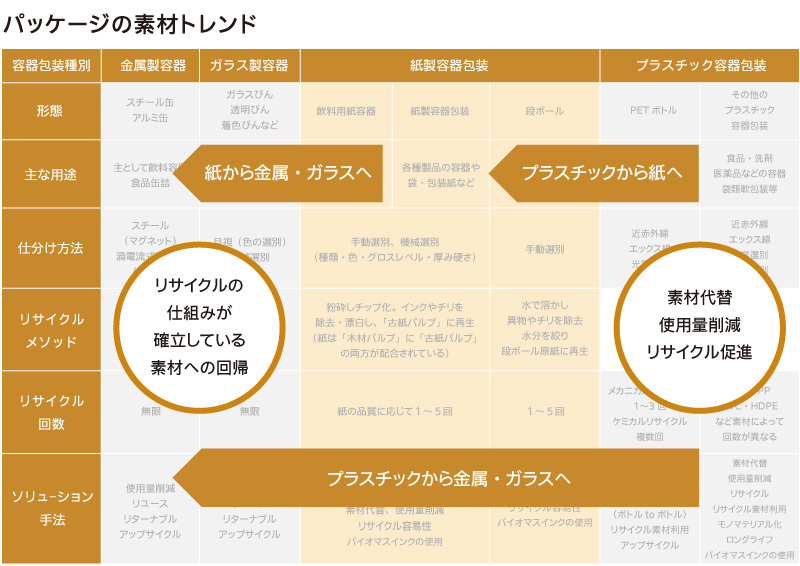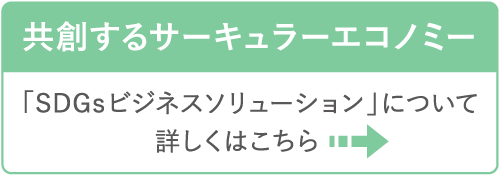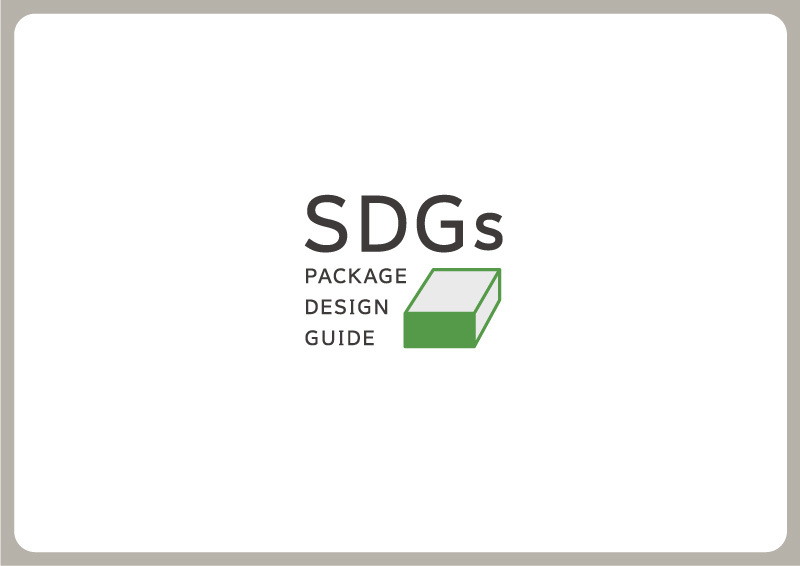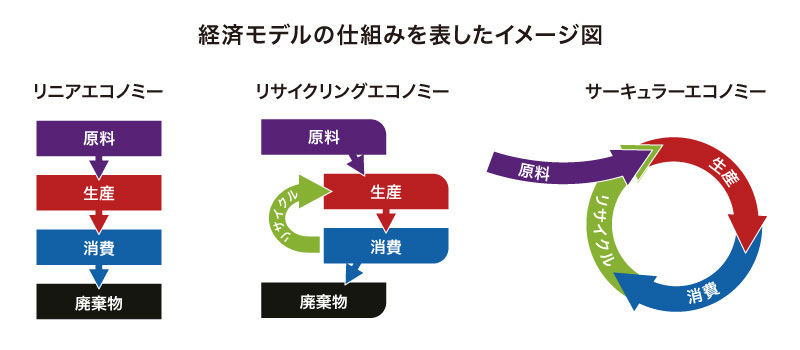Launched in November 2020, " SDGs Business Solutions " is a program where seven companies, led by Dentsu Group, collaborate to support corporate efforts in building a circular economy.
As part of this project, Dentsu Inc. created the "SDGs Packaging Design Guide" (click the icon below to download), serving as a reference for SDGs-focused packaging design development.
Why is packaging design important in building a circular economy?
What are the key points for developing packaging design from an SDGs perspective?
Ms. Mineko Hotta, founder of DENTSU DESIGN FIRM, which created this guide, explains from a product designer's perspective.
The key to future packaging lies in "Circular Design"
As awareness of the SDGs continues to grow, packaging is gaining attention as the most immediate point of communication between products and consumers.
Packaging is not merely protective; it serves as a communication tool with consumers, conveying product features and value while highlighting differentiation from competitors. Amidst crowded retail shelves filled with competing products, packaging must capture consumers' attention, communicate product content and characteristics, and stimulate purchasing desire. Furthermore, it contributes to maintaining and enhancing corporate image and brand value.
When the perspective of the SDGs is incorporated into this communication touchpoint—package design—it becomes a vital medium for conveying a company's SDGs, sustainability initiatives, and aspirations to consumers, fostering their empathy and understanding.
Developing packaging design with an SDGs perspective requires "design for the circular economy," or "circular design," which differs from conventional packaging.
The circular economy refers to an economic system where production, consumption, and recycling continuously cycle, ultimately aiming for zero waste.
In contrast, traditional economic activity follows a linear process: "raw materials → production → consumption → disposal," known as the "linear economy." The "recycling economy" builds upon the linear economy, considering how to effectively utilize waste through recycling. The "circular economy" represents a further advancement of this concept.
In the circular economy, packaging design requires a holistic view of the entire value chain—from material selection, design, and certifications during manufacturing to post-use recycling.
Packaging design is undergoing significant change
The primary materials used in packaging include metal, glass, paper, and plastic.
For example, PET bottles, classified as plastic containers, are very familiar beverage packaging for us. But did you know they have undergone various changes over time?
PET bottles were adopted as beverage containers in 1974. Subsequently, in Japan, starting in the 2000s, "material reduction" began through thinning (reducing bottle thickness to decrease plastic usage). Furthermore, as "material substitution," the introduction of recycled plastics and plant-derived bioplastics is also progressing. Additionally, label-free designs have eliminated the hassle of removing labels, making recycling easier. In recent years, circular utilization like "bottle-to-bottle" recycling—where used PET bottles are collected, processed, and regenerated into new PET bottles—has accelerated.
Another recent trend in beverage containers is a return to materials like glass and metals (aluminum and steel) that already have well-established recycling systems for collection and reprocessing. This movement stems from a renewed recognition that aluminum and steel cans, which existed before PET bottles, are actually highly recyclable materials. Personally, I'm very interested in seeing how far this "learning from the past" phenomenon spreads globally.

From the "SDGs Packaging Design Guide".
Furthermore, new businesses born from the fundamental idea of "eliminating single-use packaging altogether" are emerging.
TerraCycle's "Loop," a circular shopping platform launched in 2019, offers a sustainable shopping service using dedicated reusable containers for food and daily necessities, along with refills and delivery. This service replaces containers with durable materials (primarily aluminum, stainless steel, glass, etc.), collects used containers from users' homes, cleans and refills them, then reuses them—providing a new system. Thus, circular services significantly transform packaging itself. Loop is scheduled to begin pilot testing in Japan in spring 2021.
Key Points for SDG-Oriented Packaging Design Development
When developing packaging design, it is crucial to first envision the "circularization" of the product and its packaging. By taking a holistic view of the entire value chain and designing comprehensively, packaging evolves. Naturally, designers alone cannot achieve this; collaboration and cooperation with various departments—including planning, development, manufacturing, and procurement—are essential.
Key Points for SDGs-Oriented Packaging Design Development
- Use materials that minimize environmental impact
- Ensuring environmental consideration throughout manufacturing and distribution processes
- Consideration for disposal, collection, and recycling after use
- Ensure appropriate consideration for end-users
- Communicate a vision and commitment to SDGs and sustainability
We believe that starting with packaging—the most immediate and crucial point of communication between companies and consumers—can create effective approaches and build the facts needed for PR around SDGs and sustainability initiatives, which are often perceived as difficult to implement.
Our "SDGs Packaging Design Guide" introduces social trends and shifts in consumer values, summarizing key points for packaging development. We hope it provides useful hints for SDGs initiatives.
The "SDGs Packaging Design Guide" can be downloaded here.

For "SDGs Business Solutions," please contact Dentsu Inc. Team SDGs. Our website provides detailed information about this solution. Inquiries are also welcome here.








